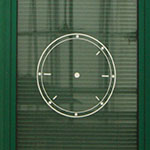Euroacademia Conferences
 Europe Inside-Out: Europe and Europeanness Exposed to Plural Observers (9th Edition) April 24 - 25, 2020
Europe Inside-Out: Europe and Europeanness Exposed to Plural Observers (9th Edition) April 24 - 25, 2020 Identities and Identifications: Politicized Uses of Collective Identities (9th Edition) June 12 - 13, 2020
Identities and Identifications: Politicized Uses of Collective Identities (9th Edition) June 12 - 13, 2020 8th Forum of Critical Studies: Asking Big Questions Again January 24 - 25, 2020
8th Forum of Critical Studies: Asking Big Questions Again January 24 - 25, 2020 Re-Inventing Eastern Europe (7th Edition) December 13 - 14, 2019
Re-Inventing Eastern Europe (7th Edition) December 13 - 14, 2019 The European Union and the Politicization of Europe (8th Edition) October 25 - 26, 2019
The European Union and the Politicization of Europe (8th Edition) October 25 - 26, 2019 Identities and Identifications: Politicized Uses of Collective Identities (8th Edition) June 28 - 29, 2019
Identities and Identifications: Politicized Uses of Collective Identities (8th Edition) June 28 - 29, 2019 The European Union and the Politicization of Europe (7th Edition) January 25 - 26, 2019
The European Union and the Politicization of Europe (7th Edition) January 25 - 26, 2019 7th Forum of Critical Studies: Asking Big Questions Again November 23 - 24, 2018
7th Forum of Critical Studies: Asking Big Questions Again November 23 - 24, 2018 Europe Inside-Out: Europe and Europeanness Exposed to Plural Observers (8th Edition) September 28 - 30, 2018
Europe Inside-Out: Europe and Europeanness Exposed to Plural Observers (8th Edition) September 28 - 30, 2018 Identities and Identifications: Politicized Uses of Collective Identities (7th Edition) June 14 - 15, 2018
Identities and Identifications: Politicized Uses of Collective Identities (7th Edition) June 14 - 15, 2018
Visual Objects in European-Bengali Identity Dynamics: From 18th Century Exchanges to Contemporary Afterlives
-
-

-
Presentation speakers
- Wim De Winter, Ghent University, Belgium
- Download presentation
Abstract:
My contribution investigates the history, appropriations and afterlives of visual objects involved in historical intercultural exchanges in 18th century Bengal. Visual objects appear in this history on multiple levels, both as gift-objects and as part of ‘early visual anthropologies’. As gift-objects, specific visual materials such as Flemish prints or copies of European paintings circulated as gifts from European merchants to influential local power-brokers. These gifts formed a nexus around which identities and meanings were created, adapted and carried into their afterlives – the study of which calls for an interdisciplinary historical-anthropological approach, examining these objects’ appearance and use-context today. The historical exchanges of visual objects have also shaped how historical European identities are viewed in Bengal today, in the guise of ‘cultural heritage’. Visual art was also crucial in transmitting and mediating contextual identities within the 18th century Bengali environment of exchange, which led to mutual ‘early visual anthropologies’. The Antwerpian artist Solvyns (1760-1824) has been considered as one of the ‘early visual anthropologists’ to depict life and activities of Bengali people in his drawings, while Bengali artists simultaneously depicted the European presence in paintings and temple sculptures, which still carry meanings for local inhabitants today. These ‘early visual anthropologies’ worked in tandem with the promotion of a ‘colonial legacy’ in Belgian prints and books, while European gift-objects and paintings were (and still are) being preserved in Bengali palaces, transmitting an image associated with European cultural identity as a historical referent. A fieldwork investigation on these roles of the visual in Bengal shows what historians stand to gain by an engagement with the ‘visual turn’: the above visual objects serve as keys to a contemporary reflection on their appropriation and role in the formation of historical identities, in areas where a textual approach does not provide adequate insights.
-
Related Presentations

Who Can Erase the Traces?
- Fortunata Calabro

Taxonomy of Engagements in Furnishing the City
- Thelma Lazo-Flores
















